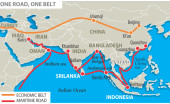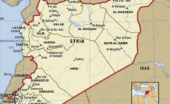Molly Minturn - My family is heartbroken to share that my father died in surgery on Monday, Feb. 10. It…
Raoul Wallenberg – Updates
Written by Diana Thebaud Nicholson // November 12, 2016 // Geopolitics, Wednesday Nights // 1 Comment
See also Wednesday Night #1577 and #1610
Raoul Wallenberg was, at last, declared dead on October 26th
(The Economist) BRONZE replicas of his briefcase, stamped “RW”, are scattered across the world. One stands on Lidingö island near Stockholm, on the grassed-over foundations of the summer house where he was born. Others wait at the Holocaust memorial outside Nottingham, and by the United Nations in New York. In Budapest one has been left on a bench, as if at any moment Raoul Wallenberg, with his long coat, receding hairline and dark, burning eyes, will hurry past and retrieve it.
With the blue-and-yellow “protection passes” he carried in that briefcase, a diplomat’s bluff made “authentic” with Swedish government stamps and decorative Swedish crowns, he saved the lives of thousands of Jews in Nazi-occupied Hungary in a mere five-month tour in 1944. In the 31 safe houses he set up round Budapest, decked with huge Swedish flags, he fed, clothed and cared for thousands more. As a result he was made a citizen of Canada, Israel, Australia and the United States; awards and institutes were set up in his honour, and streets and parks named after him. Yet the many memorials to him lack one thing, a date of death. In 1945, aged 32, he disappeared; and ever after the world refused to let him go.
The last public sighting was with Russian soldiers round him and, in his hand, the briefcase, containing his plan to save more Jews. He was sent to prison in Russia, ending up in the Lubyanka in Moscow, where no file was kept on him, because (though he may have been a CIA asset) there was no case against him. The prison doctor claimed he died of a heart attack on July 17th 1947. But the doctor’s report had oddities about it, and was not believed. Another Russian officer said he had been shot. But a cleaning woman claimed to have seen him after that date; another prisoner said he had talked to a “Wallenberg” whose shadowy face he could not see; in 1951 an Italian reported that he had been in the next cell. In 1961 came a startling claim that he was alive, though weak, in a Soviet mental institution.
Emptying the trucks
Mystery was fortified by the cold war. The Russians would not co-operate to solve it until glasnost, in the 1990s, began to melt the ice. The Swedish government, too, was not keen to risk reviving scrutiny of its wartime behaviour, when the heroism of Wallenberg would be contrasted with pro-Nazi collaboration. Both countries would have preferred to let him lie. But without a date of death, that was impossible.
Besides, to those he had saved and their families, he was still alive. There was no forgetting the charismatic young Swede who had climbed onto cattle trucks bound for Auschwitz, kicked the doors open and handed out his passes, under the rifle fire of the astonished guards, to anyone who could grab one. There was no forgetting his ferocious arguments with the soldiers who, beside the Danube, were preparing to kill Jews and dump them in the river; these, too, he saved. His motto, from a letter home, was “happy to fight”.
To those who never saw him, he became a saviour angel and a legend; he was surely one of the 36 “hidden saints” who helped hard-pressed Jews in each generation. In Budapest several of his safe-houses survive on the streets where he walked, unsleeping, intent to save “as many as possible”. Well into this century, descendants of the saved still wanted to kiss his cheek, hug him and thank him.
But the refusal to think him dead was mostly shouldered by his family. The full extent of their dedication was slowly and painfully revealed to Ingrid Carlberg, Wallenberg’s biographer. For 30 years his mother Maj and his stepfather, Fredrik von Dardel, harried the Russian and Swedish governments. They sent letters to their “dear, beloved Raoul”, via officials, assuring him that his room was ready for him. Fresh flowers were placed daily beside his photograph. When in 1979 yet another lead proved fruitless, they committed suicide, leaving the instruction that the search for news should last until 2000. For Raoul was still legally alive.
Their son Guy and daughter Nina, Wallenberg’s step-siblings, took the task on, assembling a 50,000-page archive about Raoul. For Guy’s children, too, the lost man was a presence: a dark cloud over the family, even at mealtimes or on outings to the beach. Nina told Ms Carlberg she clung to the thought that one day, back home, Raoul would take his tin soldiers out of their boxes and enjoy arranging them again. Guy, hopeful in 1989 that he might find him on a visit to Moscow—even if mad or ill—practised singing “Baa Baa black sheep”, their childhood song, in case Raoul would recognise it.
Only this year did the family end the search. Guy and Nina were both dead, and for the first time the name Raoul—always reserved for the man who would return—had been bestowed on a new child. In March the Swedish Tax Agency was asked, if Raoul had not appeared to register by October 14th, to announce a legal date of death for him. Calculating five years since the “heart attack” in Lubyanka, neatened to the end of the month, this was given as July 31st 1952. The fiction served.
The family held their own memorial service at Lidingö, by the briefcase with his initials. No smiling figure came rushing through the birch trees, towards the lake, to pick it up. His work, though—the duty of each moral man to face down tyranny—would never be done. The briefcase waited, and its name was “Hope”.
Update: This article was amended on November 12th to include a reference to Raoul Wallenberg’s biographer, Ingrid Carlberg.
7 August
From a Dacha Wall, a Clue to Raoul Wallenberg’s Cold War Fate
(NYT) The 1945 disappearance of Raoul Wallenberg — a Swedish diplomat who saved thousands of Hungarian Jews from Nazi gas chambers — ranks among the most enduring mysteries of World War II.
Suspicion for the snatching of Wallenberg off the streets near Budapest fell almost immediately on the Soviet Union. To the Soviets occupying Budapest, the ties that Wallenberg had forged with senior Nazis and Americans smelled like espionage, with rescuing Jews an implausible cover story. But his disappearance went unexplained, right through the Gorbachev era of glasnost and the chaos after the collapse of the Soviet Union.
This summer, however, the newly published diaries of the original head of the K.G.B. — found secreted inside the wall of a dacha — have shed fresh light on the case by stating outright for the first time that Wallenberg was executed in a Moscow prison.
“I have no doubts that Wallenberg was liquidated in 1947,” wrote Ivan A. Serov, a Soviet military man who ran the K.G.B. from 1954 to 1958.
29 May 2016
Dear friends,
A number of Canadians, including Irwin Cotler, David Matas, and Holocaust survivors George/Vera Gara, participated last week at a roundtable in Budapest on Canada’s first honourary citizen.
Four members of his immediate family on his mother’s side, who have been attempting to learn what happened to him in Russia for 70 years, along with concerned persons from
other nations, were also present.
I hope that the linked message (http://www.david-kilgour.com/2016/DK_May202016_Wallenberg_Budapest.pdf) will encourage you to join us in pressing the government of Russia to release finally the documents which explain what happened to him.
Many thanks,
(Hon.) David Kilgour
23 July 2014
 The Raoul Wallenberg Legacy of Leadership Project, an initiative of the Montreal Institute for Genocide and Human Rights Studies, aims at increasing awareness of Raoul Wallenberg, his legacy and its importance for contemporary mass atrocity prevention among the younger generations and the general public in selected cities of North America and internationally during fall 2014.
The Raoul Wallenberg Legacy of Leadership Project, an initiative of the Montreal Institute for Genocide and Human Rights Studies, aims at increasing awareness of Raoul Wallenberg, his legacy and its importance for contemporary mass atrocity prevention among the younger generations and the general public in selected cities of North America and internationally during fall 2014.
Our objective is to launch a discussion and impart knowledge of Wallenberg and his legacy to produce valuable content to be used for contemporary and future purposes, echoing the indispensable message that every individual can make a difference in standing up against mass atrocities.
Public events will be held in New York, Montreal, Ottawa and Toronto, and will bring together recognized advocates for genocide prevention and human rights to reflect on the matter through talks and panel discussions. Op-eds and other content will also be produced by distinguished individuals to further shine light on the matter.
4 September 2013
What Raoul Wallenberg Can Teach Us About Syria
By András Simonyi, Managing Director, Center for Transatlantic Relations, Johns Hopkins University
(HuffPost) During his brief stopover in Stockholm today, President Obama made a symbolic visit to the city’s Great Synagogue to pay tribute to the great Swedish hero, Raoul Wallenberg. We are pleased he did that. Also, it is important to know: Raoul Wallenberg was not a Jew. He was a Protestant, but with strong values of humanity and responsibility for his fellow humans.
In his address before the synagogue on the eve of the Jewish New Year Rosh Hashanah, Obama made a vivid point by drawing parallels between the Swedish diplomat who saved the lives of thousands of Hungarian Jews during World War II and the need for international intervention to save lives in present-day Syria. In the words of the president, Raoul Wallenberg’s actions should serve as a reminder “of our power not simply to bear witness, but also to act.”
Raoul Wallenberg’s family seeks Obama’s help to find out WWII hero’s fate
(AP via WaPost) The family of World War II hero Raoul Wallenberg will ask President Barack Obama for help in their quest to find out what happened to the Swedish diplomat who vanished after being arrested by Soviet forces in 1945.
Wallenberg’s niece, Marie Dupuy, told The Associated Press on Tuesday that the family will present a letter to Obama at a memorial ceremony for Wallenberg that the president is set to attend Wednesday in Stockholm.
In the letter, Wallenberg’s half-sister Nina Lagergren and the widow of his half brother, Matilda von Dardel, suggest U.S. diplomats raise the Wallenberg issue “directly in formal discussions with Russian authorities.”
“Researchers need committed support in their efforts to obtain direct and uncensored access to Russian archival collections, especially those of the Soviet era intelligence and security services,” says the letter, a copy of which was given to AP.
22 June 2013
Researcher: WWII hero Wallenberg deeply involved with armed resistance movement in Hungary
(Ottawa Citizen) Raoul Wallenberg, the Swedish diplomat who saved thousands of Jews from Nazi-occupied Hungary, may also have had a secret military mission during World War II, a new book claims.
Citing documents from Hungarian archives, Swedish-Hungarian writer Gellert Kovacs says Wallenberg, whose fate remains shrouded in mystery, had closer links with Hungary’s non-Communist resistance movement than previously thought.
That, Kovacs said, could shed new light on why the Soviets arrested Wallenberg in Budapest in 1945 and why supposedly neutral Sweden remained so passive following his disappearance.
“For me it is very clear that it was also Wallenberg’s mission to act as some kind of co-ordinator between the resistance forces and the Allies,” Kovacs told The Associated Press.
Other researchers investigating Wallenberg’s fate called the information significant, but said it wasn’t enough to conclude that Wallenberg gave military support to Hungarian resistance fighters.
It’s well known that Wallenberg’s work as Sweden’s envoy in Budapest was a cover for a humanitarian mission as secret emissary of the U.S. War Refugee Board, created in an attempt to stem the annihilation of Europe’s Jews. He saved at least 20,000 Jews in Budapest by giving them Swedish travel documents or moving them to safe houses.
In his book, whose Swedish title could be translated as “Dark skies over Budapest,” Kovacs says documents he found in Hungary’s military history archives show how a member of the resistance movement communicated the position of Nazi Germany’s ships in the Danube river to the allies via radio equipment in the Swedish embassy. British planes based on Malta then bombed the ships.
While there is no documentation that links those activities directly to Wallenberg, Kovacs says his research shows Wallenberg had frequent contacts with leaders of the non-communist resistance movement including Kalman Zsabka and Zoltan Miko. Swedish assistance to the Hungarian resistance movement in military operations with the allies would have run counter to Sweden’s neutrality.
Previous research has also shown Wallenberg was in contact with high-ranking resistance leader Geza Soos.
Part of Kovcac’s work is based on research by Hungarian historian Jozsef Gazsi during the Cold War. Gazsi interviewed several former members of the resistance movement who said they had met Wallenberg. One of them, Ferenc Kalmanffy, even said that Wallenberg had given them “hand-grenades, pistols and some machine-guns,” according to Hungarian documents that Kovacs cites in his book.
Susanne Berger, a long-time Wallenberg researcher, called that information significant.
“This is clearly a military political activity and that really stirs up a whole new hornet’s nest,” she told AP.
“The sources and contents Gellert cites obviously have to be critically evaluated, but I see nothing in this material that would indicate that the alleged actions could not be true,” she added.
Swedish author Ingrid Carlberg, who published a biography of Wallenberg last year, said Kovac’s book “paints an entirely new and very interesting picture” of the resistance movement’s use of radio equipment in the Swedish embassy.
However, she said those activities were probably set in motion by the first secretary at the Swedish legation, Per Anger, who she said worked closely with the leader of the resistance group that used the radio equipment.
… The information also provides a broader context to Sweden’s passive reaction to Wallenberg’s disappearance, Kovacs said.
Sweden has been widely criticized for prioritizing its relations with the Soviet Union over finding out what happened to Wallenberg.
“He breached all existing diplomatic conventions. If he had made it back I think he would have been scolded by the Foreign Ministry and he would never have gotten another job there,” Kovacs said about Wallenberg. “I think this is the biggest reason why the foreign ministry was so feeble in the first years. They felt Wallenberg put the embassy at risk.” (See Antal Deutsch comment below)
8 May 2013
Susanne Berger and Vadim Birstein: Sweden, Russia Should Find Truth on Wallenberg
(The Moscow Times) « For a variety of reasons, the Swedish organizers decided to focus attention entirely on highlighting Wallenberg’s legacy, excluding almost completely the question of his fate. As a result, many observers feel that Sweden once again missed a golden opportunity to press the Russian authorities for answers. The approach was also troubling because it signaled that Sweden no longer considers solving the Wallenberg mystery important.
Just as perplexing is that Swedish officials continue to emphasize all the obstacles that stand in the way of clarifying Wallenberg’s fate instead of energetically pursuing the many options that are available to investigators. Unfortunately, this position plays directly into the hands of President Vladimir Putin, who still shows only a limited willingness to properly reckon with the Soviet past. »
22 August 2012
Susanne Berger: ‘Other Swedes in the Gulag complicate Wallenberg search’
With a concerted effort it should be possible to clarify these issues. By removing a major element of confusion, proper identification of the three unknown “Swedish” Red Cross officials would undoubtedly help to move the search for Raoul Wallenberg a big step forward.
(The Local – Sweden’s English newspaper) Was a “Swedish Prisoner” who was seen in Lwow in 1946 held in Vladimir Prison a decade later? And was this prisoner Raoul Wallenberg or an unidentified Swedish Red Cross official? Contributor Susanne Berger explains how the confusion about other Swedish prisoners in the Gulag complicates the search into Wallenberg’s fate.
Susanne Berger is a US-based German historian heavily involved in research into the life of Raoul Wallenberg, the Swedish diplomat who helped prevent the arrests of thousands of Hungarian Jews during the Second World War.





One Comment on "Raoul Wallenberg – Updates"
Re: Researcher: WWII hero Wallenberg deeply involved with armed resistance movement in Hungary
Wallenberg tried to maintain good relations with everyone having any influence in Hungary, including Gabor Kemeny, the Arrow-Cross foreign minister, and his wife. There was not much military resistance in Hungary to the Germans. When, at the behest of the Germans the Arrow-Cross replaced the Regent, Admiral Horthy in mid-October 1944, there were small groups of Hungarian army officers who remained loyal to Horthy. Some were killed by the Arrow-Cross, but others crossed over to the Soviets, and formed a provisional government in Soviet-occupied Debrecen in December 1944. It is probable that Wallenberg was in touch with some of these folks during the October-December period in Budapest, but that is not something that should have bothered the Soviets in 1945. In my view, the story about the resistance contacts , even if true, explains nothing about the behaviour of the Soviets or of the Swedes.